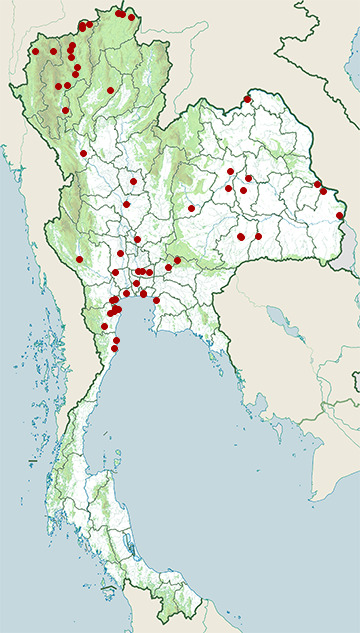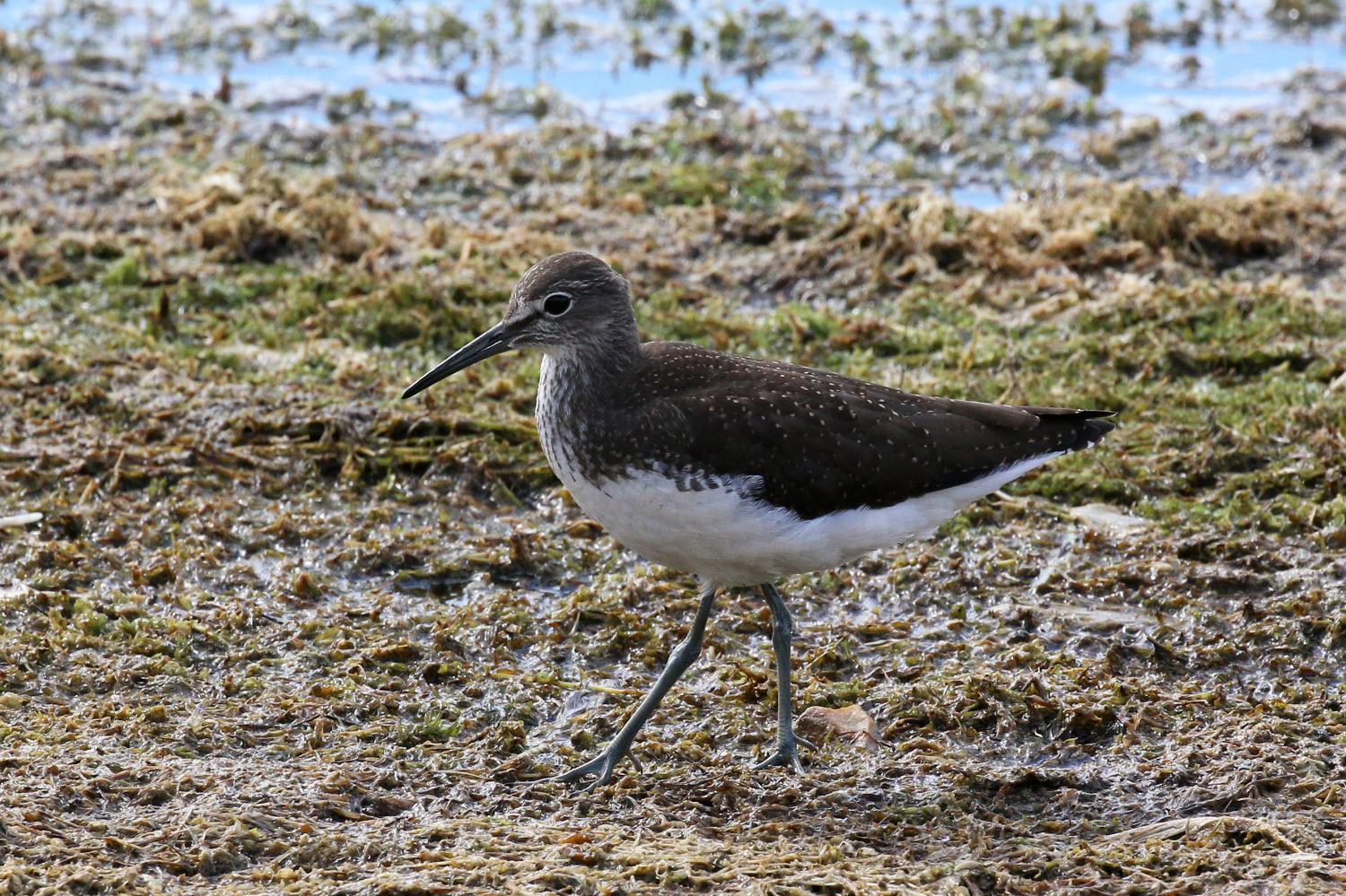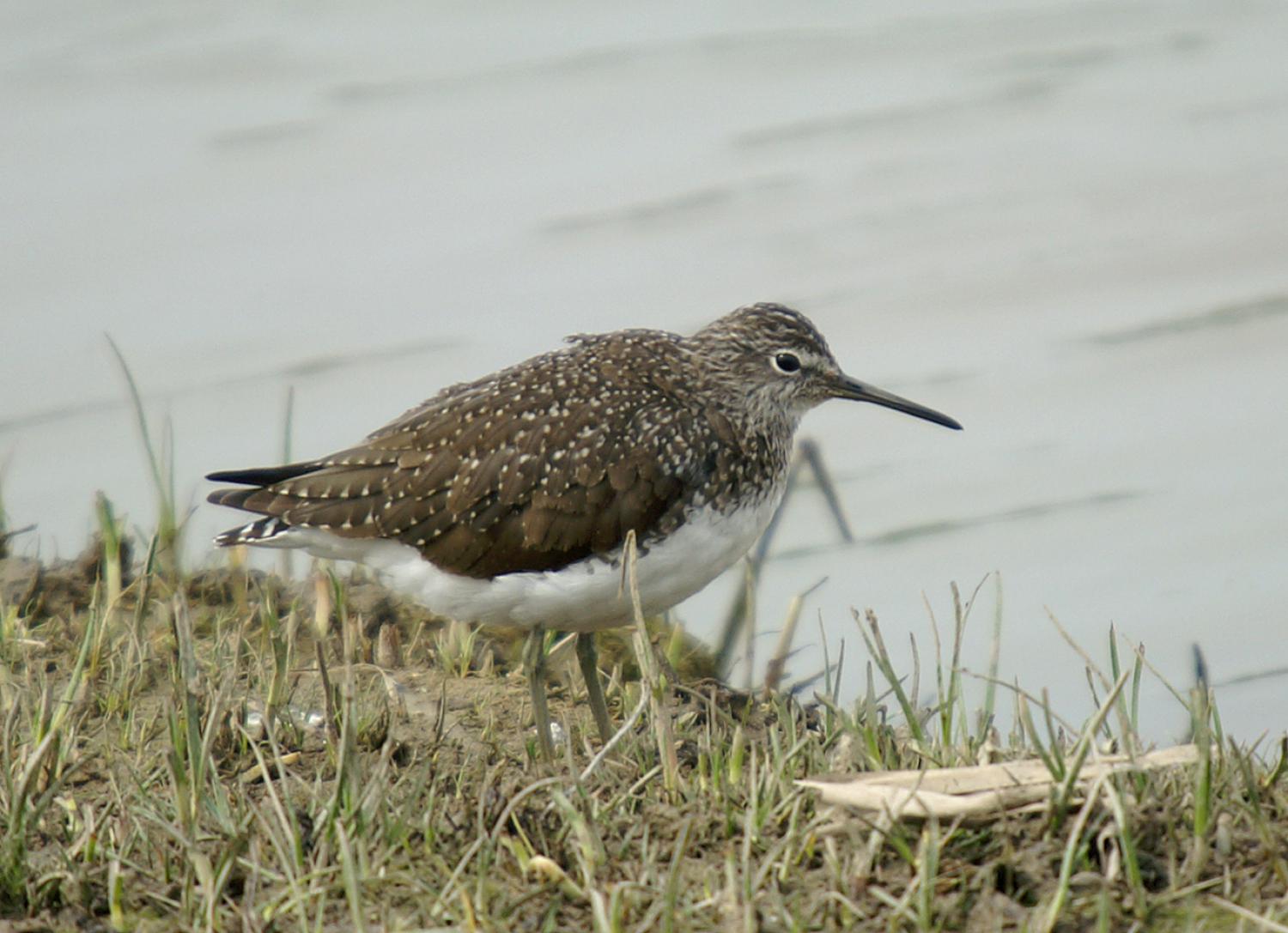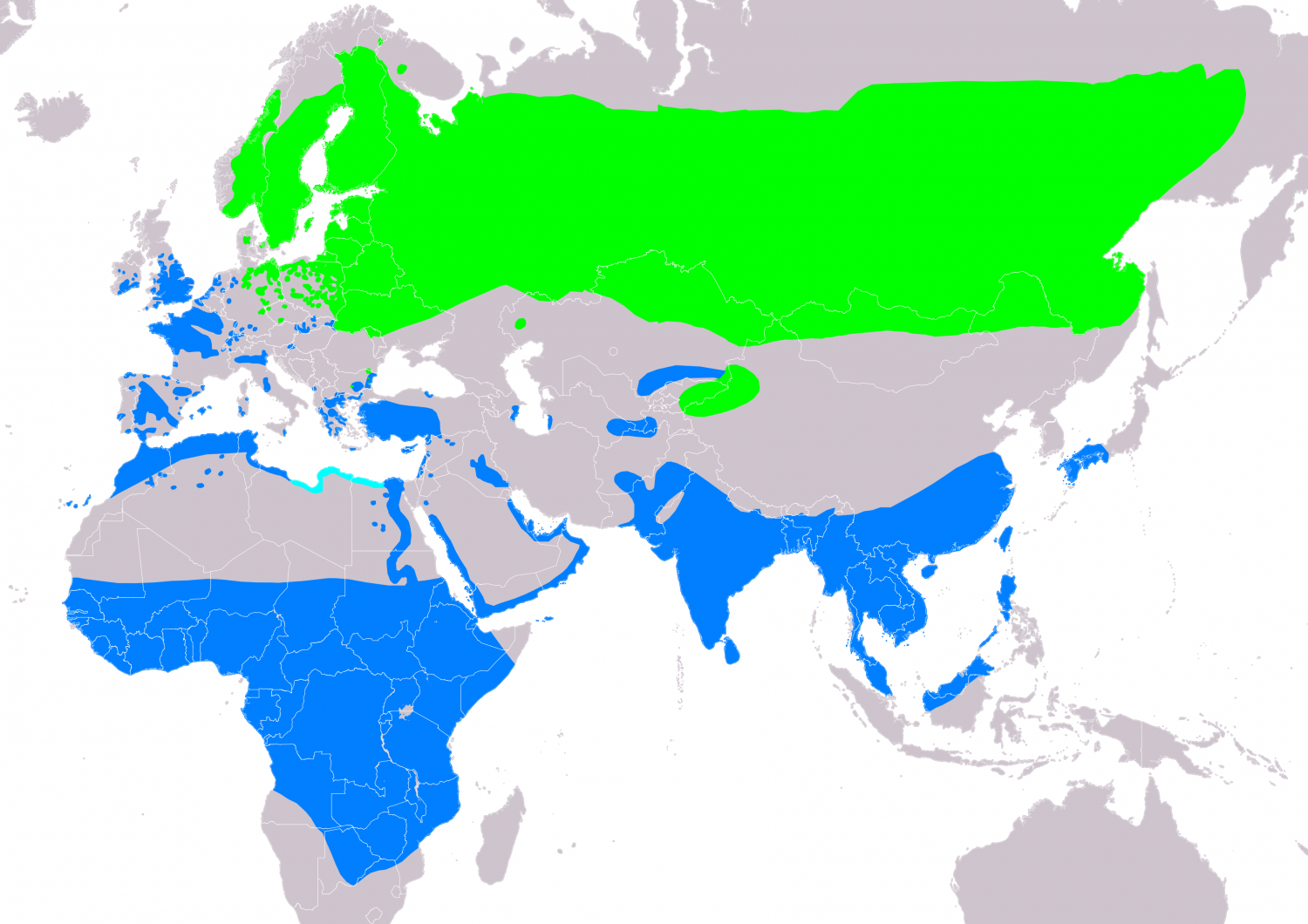Species of Thailand
Green sandpiper
Tringa ochropus
Carolus Linnaeus, 1758
In Thai: นกชายเลนเขียว
The green sandpiper (Tringa ochropus) is a small wader (shorebird) of the Old World. The genus name Tringa is the New Latin name given to the green sandpiper by Aldrovandus in 1599 based on Ancient Greek trungas, a thrush-sized, white-rumped, tail-bobbing wading bird mentioned by Aristotle. The specific ochropus is from Ancient Greek okhros, "ochre", and pous, "foot".
The green sandpiper represents an ancient lineage of the genus Tringa; its only close living relative is the solitary sandpiper (T. solitaria). They both have brown wings with little light dots and a delicate but contrasting neck and chest pattern. In addition, both species nest in trees, unlike most other scolopacids.
Given its basal position in Tringa, it is fairly unsurprising that suspected cases of hybridisation between this species and the common sandpiper (A. hypoleucos) of the sister genus Actitis have been reported.
Description
This species is a somewhat plump wader with a dark greenish-brown back and wings, greyish head and breast and otherwise white underparts. The back is spotted white to varying extents, being maximal in the breeding adult, and less in winter and young birds. The legs and short bill are both dark green.
It is conspicuous and characteristically patterned in flight, with the wings dark above and below and a brilliant white rump. The latter feature reliably distinguishes it from the slightly smaller but otherwise very similar solitary sandpiper (T. solitaria) of North America.
In flight it has a characteristic three-note whistle.
Distribution and ecology
It breeds across subarctic Europe and east across the Palearctic and is a migratory bird, wintering in southern Europe, the Indian Subcontinent, Southeast Asia, and tropical Africa. Food is small invertebrate items picked off the mud as this species works steadily around the edges of its chosen pond.
This is not a gregarious species, although sometimes small numbers congregate in suitable feeding areas. Green sandpiper is very much a bird of freshwater, and is often found in sites too restricted for other waders, which tend to like a clear all-round view.
It lays 2–4 eggs in an old tree nest of another species, such as a fieldfare (Turdus pilaris). The clutch takes about three weeks to hatch.
The green sandpiper is one of the species to which the Agreement on the Conservation of African-Eurasian Migratory Waterbirds (AEWA) applies. Widely distributed and not uncommon, it is not considered a threatened species by the IUCN on a global scale.
This article uses material from Wikipedia released under the Creative Commons Attribution-Share-Alike Licence 3.0. Eventual photos shown in this page may or may not be from Wikipedia, please see the license details for photos in photo by-lines.
Category / Seasonal Status
Wiki listed status (concerning Thai population): Winter visitor
BCST Category: Recorded in an apparently wild state within the last 50 years
BCST Seasonal status: Non-breeding visitor
Scientific classification
- Kingdom
- Animalia
- Phylum
- Chordata
- Class
- Aves
- Order
- Charadriiformes
- Family
- Scolopacidae
- Genus
- Tringa
- Species
- Tringa ochropus
Common names
- English: Green sandpiper
- French: Chevalier cul-blanc
- Thai: นกชายเลนเขียว
Conservation status

Least Concern (IUCN3.1)
Photos
Please help us review the bird photos if wrong ones are used. We can be reached via our contact us page.
Range Map

- Amphawa District, Samut Songkhram
- Ban Laem District, Phetchaburi
- Ban Lat District, Phetchaburi
- Ban Phai District, Khon Kaen
- Bang Pu Recreation Centre
- Bangkok Province
- Borabue District, Maha Sarakham
- Bueng Boraped Non-Hunting Area
- Chanuman District, Amnat Charoen
- Chatturat District, Chaiyaphum
- Chiang Dao District, Chiang Mai
- Chiang Dao Wildlife Sanctuary
- Chiang Khong District, Chiang Rai
- Chiang Saen District, Chiang Rai
- Doi Inthanon National Park
- Doi Lo District, Chiang Mai
- Doi Pha Hom Pok National Park
- Doi Tao District, Chiang Mai
- Erawan National Park
- Fang District, Chiang Mai
- Huai Chorakhe Mak Reservoir Non-Hunting Area
- Huai Talat Reservoir Non-Hunting Area
- Kamphaeng Saen District, Nakhon Pathom
- Kantharawichai District, Maha Sarakham
- Khao Sam Roi Yot National Park
- Khao Yai National Park
- Khemarat District, Ubon Ratchathani
- Khlong Luang District, Pathum Thani
- Mae Ai District, Chiang Mai
- Mae Mo District, Lampang
- Mae Taeng District, Chiang Mai
- Mueang Chiang Mai District, Chiang Mai
- Mueang Chonburi District, Chonburi
- Mueang Khon Kaen District, Khon Kaen
- Mueang Phetchaburi District, Phetchaburi
- Mueang Samut Sakhon District, Samut Sakhon
- Mueang Samut Songkhram District, Samut Songkhram
- Mueang Suphanburi District, Suphan Buri
- Mueang Surin District, Surin
- Mueang Tak District, Tak
- Namtok Mae Surin National Park
- Nong Bong Khai Non-Hunting Area
- Pai District, Mae Hong Son
- Pak Phli District, Nakhon Nayok
- Pak Thale
- Pha Taem National Park
- Pran Buri Forest Park
- Rattanawapi District, Nong Khai
- Samut Prakan Province
- San Sai District, Chiang Mai
- Taphan Hin District, Phichit
- Tha Wung District, Lopburi
- Tha Yang District, Phetchaburi
- Thanyaburi District, Pathum Thani
- Wat Phai Lom & Wat Ampu Wararam Non-Hunting Area


